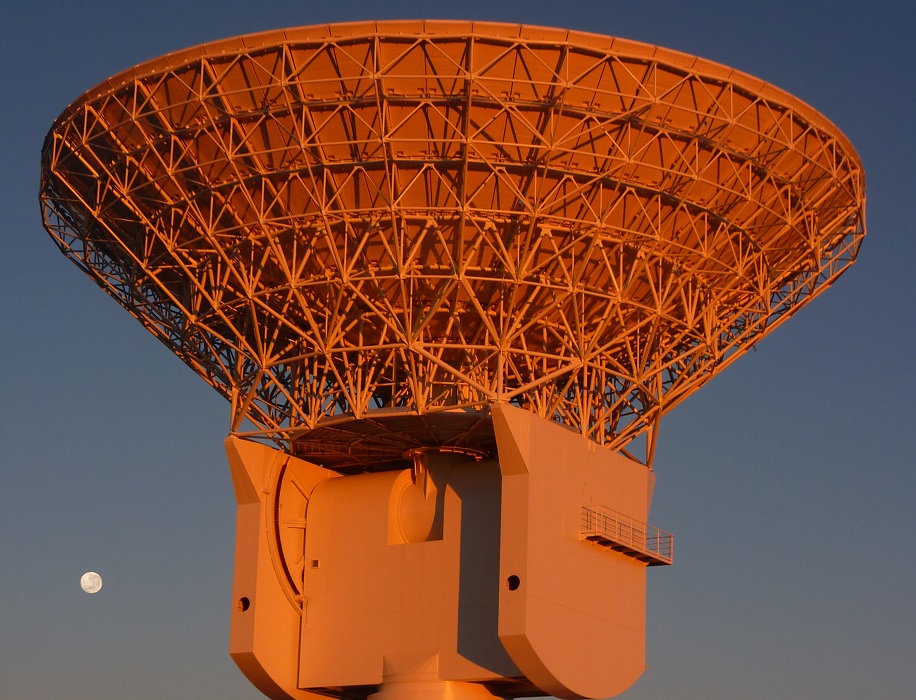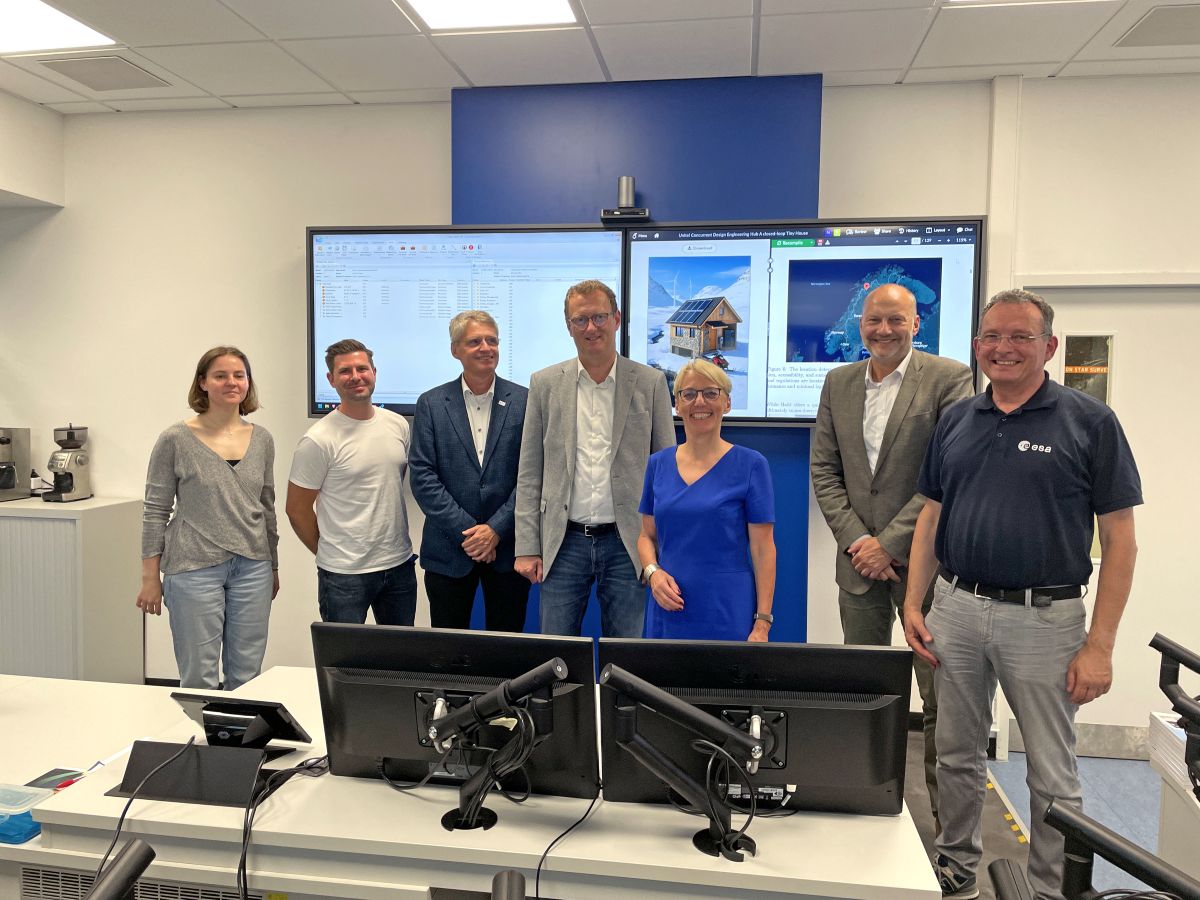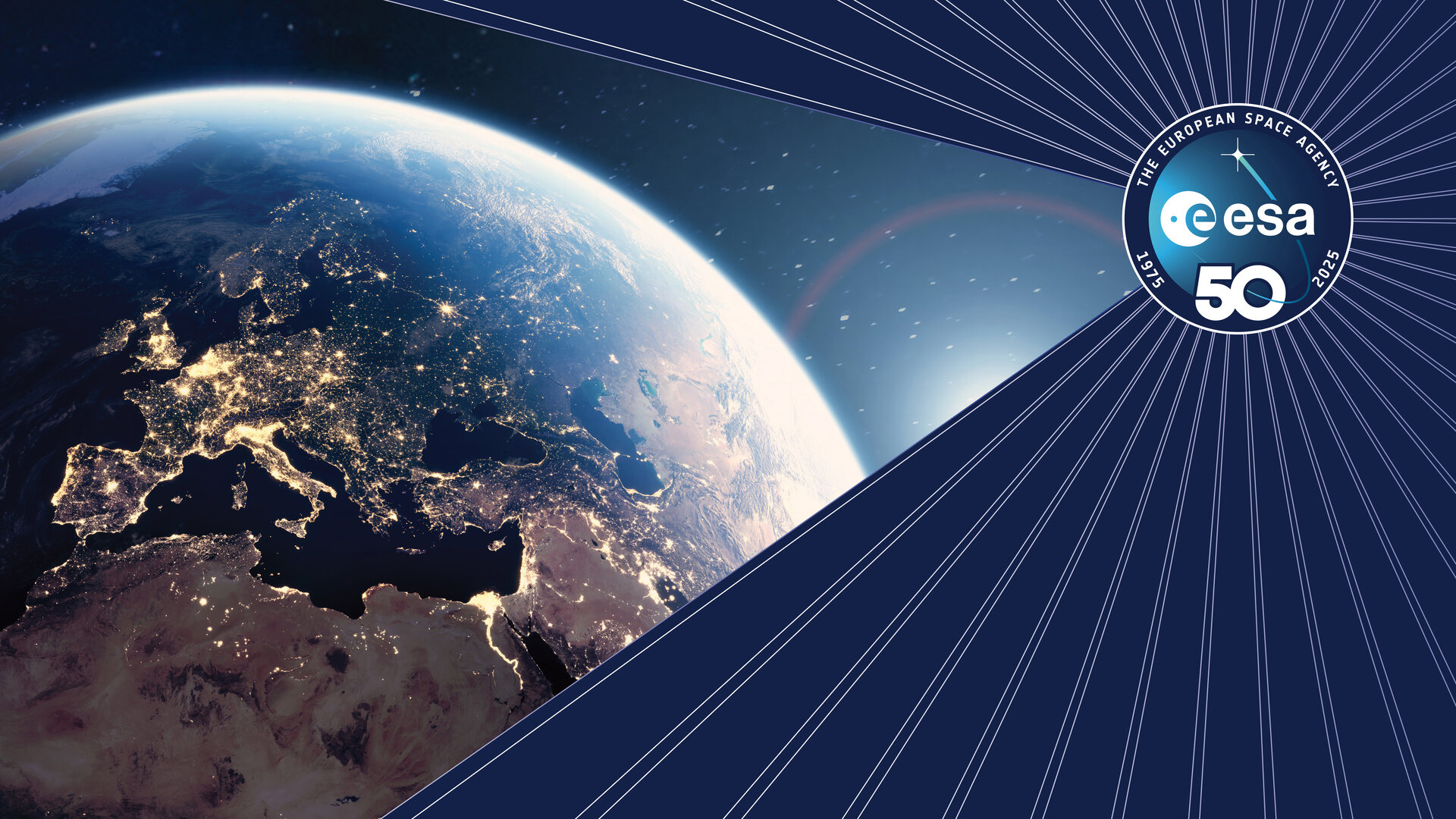ESOC to track Artemis I CubeSats
Photo: NASA/ESA/ATG Medialab
Half a century since Apollo, the Artemis I mission is set to launch on 29 August with a test flight that prepares humankind for our next adventure at the Moon, and Europe is playing a crucial role.
Joining NASA’s Orion spacecraft on the powerful Space Launch System rocket are ten CubeSats that will help prepare for the return of astronauts to our lunar companion. ESA’s Estrack deep space antennas, operated remotely from ESA’s ESOC operations centre, along with the Goonhilly Earth Station in the UK, will be tracking six of the shoebox-sized satellites, ensuring they arrive where they need to be, and their data gets back home.
“Our Estrack stations will be critical in determining the CubeSat trajectories, returning their data home and supporting the commanding of the various spacecraft,” explains Lucy Santana, responsible for ESA ground facility services for deep space missions.
“We’re very proud to do our bit in returning humankind to the Moon”.

CubeSats disperse
About an hour and a half after launch, the Interim Cryogenic Propulsion Stage (ICPS) will perform a ‘trans-lunar injection burn’ to nudge Orion and the fleet of CubeSats in the direction of the Moon. The CubeSats will then be deployed, dispersing like dandelion seeds spread in the wind.
In the hours after liftoff, CubeSats will be deployed at specific times based on the requirements of each mission. Argomoon will be the first that ESA tracks just a few hours after launch with the Estrack Cebreros station in Spain.
Very soon after separation, as the rest of the CubeSats are deployed, more eyes on the sky will be needed as they move into their own trajectories. For this, ESA in cooperation with Goonhilly will provide about 75 hours of tracking support across its deep space stations in the two weeks after launch.
“We look forward to contributing to this iconic mission from here in the UK. Goonhilly played a role in distributing the Apollo Moon landing footage back in 1969: we’re now taking one step further and supporting humanity’s return to the Moon”, explains Matthew Cosby, Chief Technology Officer at Goonhilly.
“Our 32m deep space antenna has been used to communicate with ESA spacecraft since 2021. Supporting the Artemis I CubeSats is a fantastic way to further showcase our capabilities as we continue to expand this commercial service.”
One of the main ways Estrack will support the Artemis CubeSats is by pinning down their location and trajectory using an effect called ‘the Doppler shift’. Each satellite is transmitting information at a frequency of around 8 GHz, which stations on Earth will acquire and track.
If the spacecraft is moving towards Earth while emitting its message, the light wave gets slightly squashed, shortening the wavelength and increasing its frequency. Conversely, if the CubeSat is moving away from Earth, its message is stretched, and its frequency lengthened. With this information, teams at ESOC will be able to have an accurate estimation of where the spacecraft are and where they are headed.
Small satellites offer a big return
The CubeSats tracked by Goonhilly and ESA’s deep space antennas illustrate the potential of small spacecraft in providing great insights.
Lunar IceCube and LunaH-map are designed to search the Moon for water – the discovery of which would be crucial for long-term missions as it is needed for explorers to harvest breathable air and create rocket fuel from ice.
Biosentinel and CuSP will add to our understanding of space radiation, filling critical gaps in knowledge about the health risks to explorers in deep space from solar radiation and high-energy galactic cosmic rays.
Finally, ArgoMoon and NEA Scout will demonstrate new operations technologies that will shape the way we fly future missions to the Moon. ArgoMoon from the Italian Space Agency, ASI, will be one of the first CubeSats deployed and will act as a personal photographer for Orion’s boost to the Moon.
NEA Scout will visit the smallest ever asteroid to be studied by a spacecraft – 2020 GE is thought to be a little smaller than a school bus. While exploring the asteroid, it will use an 86-square-metre solar sail to harness solar radiation for propulsion.
The data from these first-of-a-kind missions will stream in through European antennas on Earth, where teams will get it where it needs to be and ensure we keep track of the dispersing satellites.
Landing on the Moon was hard. Returning for a longer stay will require even more planning, imagination and ingenuity, and ESA’s Estrack network of antennas dotted across the globe will play an important role as we go forward to the Moon.



